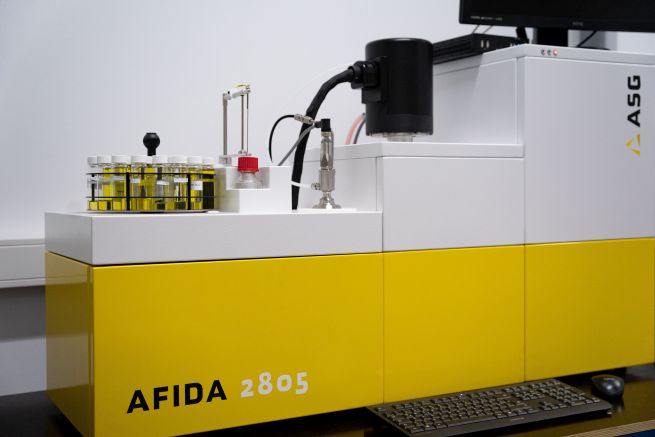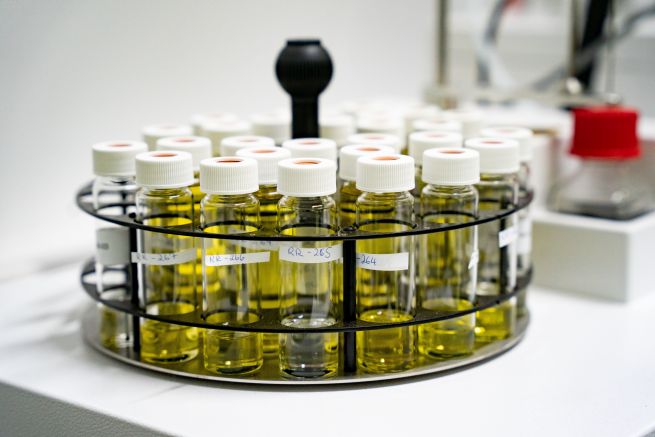Broader portfolio to analyze fuels and lubricants
21 December 2021 – In recent months, OWI Science for Fuels gGmbH has successively expanded its chemistry laboratory for the analysis of fuels and lubricants. The laboratory space has been enlarged and several new analytical instruments have been purchased to provide a broader range of analytical capabilities. “With the acquisition of several new large-scale instruments, we have significantly expanded our analysis portfolio,” explains OWI Managing Director Wilfried Plum. “We use the analytical methods and equipment both in publicly funded research projects and for services that we offer to companies in the petrochemical and renewable fuel production, vehicle and heating and component manufacturers.”
The new Advanced Fuel Ignition Delay Analyzer (AFIDA) makes it possible to measure ignition delay times and thus determine the cetane number of middle distillates and blends. This provides information on how the cetane number changes when synthetic or biogenic components are blended with conventional fuels.
Another important new acquisition is the Inductively Coupled Plasma – Optical Emission Spectrometry (ICP-OES). The apparatus makes it possible to detect the concentration of metal ions in fuels and aqueous solutions. Metal ions can leach out when fuels come into contact with metal components such as fuel lines and transfer into the fuel, changing its physicochemical properties. For example, copper ions contribute to significantly faster aging of the fuel. Lack of lubrication can also lead to increased abrasion, causing metals from components to enter the fuel more rapidly. The ICP-OES method is suitable, among other things, for the periodic analysis of fuels in hardware-in-the-loop tests or for static investigations of corrosion and material compatibility.
The following additional analytical instruments complete the new analysis capabilities in the OWI laboratory:
- The FTIR (Fourier Transform Infrared Spectroscopy) instrument is used to analyze lubricants, it can be used to make qualitative and quantitative statements about the chemical composition of fuels and the content of fatty acid methyl esters in diesel fuels.
- A TOST apparatus (Thermal Oxidation Stability Test) now supplements the existing PetroOxy and Rancimat tests for determining the aging stability of fuels. It is based on the DIN ISO 12205 method for determining oxidation stability, which is part of the DIN EN 590 standard for diesel fuels and DIN EN ISO 8217 for marine fuels (distillate fuels) such as marine diesel.
- The new acquisitions are rounded off by a RapidOxy instrument for determining the oxidation stability of lubricants, which is also increasingly being used in standardization.
“When it comes to analytics, we are always breaking new ground, because it is often a challenge to determine the physicochemical properties of new alternative energy sources, some of which differ significantly from those of conventional fuels,” explains Wilfried Plum. “In some cases, the materials of certain components of the analyzers are not compatible with the alternative energy sources, so we have to replace them. In other cases, the standardized parameters of the test procedures are not suitable for achieving comparable results to conventional fuels. In these cases, we then develop suitable adjustments to the parameters.”







